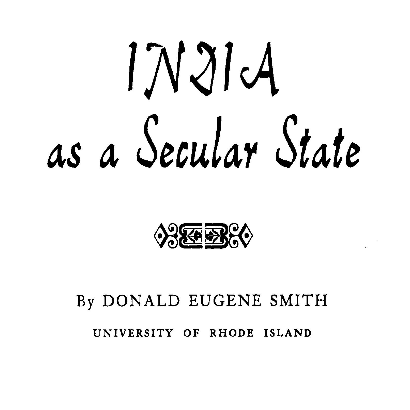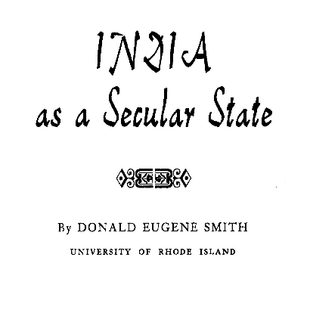Featured
India as a Secular State
Amarnath Govindarajan
Oct 17, 2011, 09:39 PM | Updated May 02, 2016, 04:10 PM IST
Save & read from anywhere!
Bookmark stories for easy access on any device or the Swarajya app.


It happens to me almost every time I attend a CRI or Friends of BJP get-together.
Four or five times in the past ten months of this calendar year 2011 alone I have been gently taken aside from the crowd of 10-15 and told the equivalent of: ‘You see, secularism is not an Indian concept, thambi, it is a Western construct because they had this fight between the Vatican and Kings so they came up with this idea. We cannot just import it to India, no?’

Caught between the inevitability of a secularist State and a rather impulsive rejection of the same from the Indian Right one does get a bit bewildered. On attempts to read-up on the topic I have always felt the explanations and definitions offered in dictionaries and reference materials to be inadequate or to be lacking in sufficient depth. The only exception being this rather old book – written by Donald Eugene Smith, published originally in 1963. (First introduced to me by fellow CRIwallah Dilip Rao)
The book is a masterly review of not just the concept but its origin, its evolution across continents and its applicability in the Indian context. The author has dwelt in considerable length on issues such as our constitutional set-up, foreign missionaries, Hindu reform and on majority-minority relations.This write-up and others following it are part of a social reading experiment where fellow CRI community members are welcome to take up a chapter or a passage or even a particularly striking section and to dwell on it to whatever length one feels like. For now I’d like to quickly get the basics sorted out of the way and look at how the secularist state evolved.
Returning to the original question: what on earth does secularism mean? At the onset we are told that perception of a secularist set-up being defined by the rather simplistic ‘seperation of church and the state’ is simply not accurate. Smith offers a more comprehensive definition:

Smith postulates that conception of a secular state is organized around three sets of relationships:
- religion and the individual (freedom of religion)
- the State and the individual (common, citizenship)
- the State and religion (separation of state and religion)
As we can see, there are three distinct entities involved here: the state, religion and the individual. To define and discuss the Secular State as being constituted merely by a seperation of church and state without due concern to other relationships namely the relationship between the State and the individual or between the religion and individual is, according to Smith, not wise.
The author also makes it amply clear that the secular state outlined above is a rather utopian ideal that is achieved nowhere but any modern state that has evolved through the liberal democratic tradition would have retained many of the above described characterstics. The United Kingdom is cited as an example where despite the existence of a State-Church the influence of religious minorities and ‘the growth of liberal and democratic ideas’ have ensured the slow removal of illiberal aspects. In this way it can be reasonably argued that the United Kingdom may be regarded as a secular state.
But it is easy for UK because the State and its citizens have been participants in the evolution of the liberal democratic tradition, and consequently its present state is a product of a few centuries of reform and adjustment. Compare the experience of the UK to that of the Indian Republic whose alleged liberal democratic set-up is for all excuses a rather hurriedly imported and least understood conception. It only seems natural that things would go wrong.
Another interesting mention in this chapter is the differentiation between a liberal secular State keeping its distance from religion and the Marxian communist State’s ‘active hostitlity’ towards religion as such. The latter does not, according to the author, qualify to be labelled ‘secular’ although the distancing is much more than in a liberal democratic set-up. One cannot help but feel that the Indian Secularist narrative has come to imitate the Marxian communist tradition in its hostility towards the majority religion.
Coming up: The Pattern of Nationalism – Religion in Indian nationalism and Pakistan movement.



